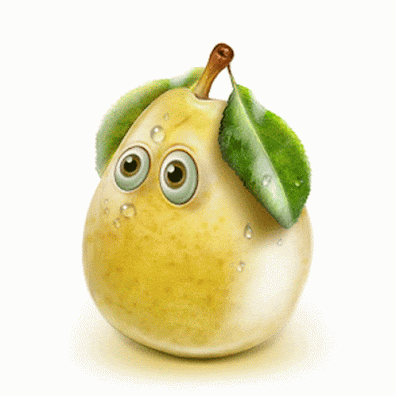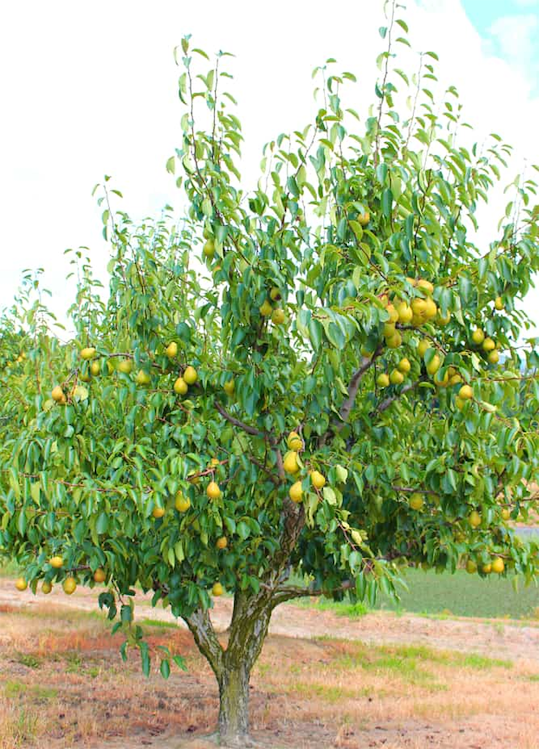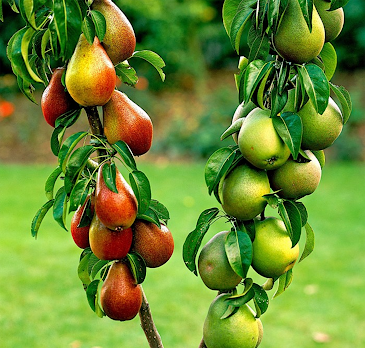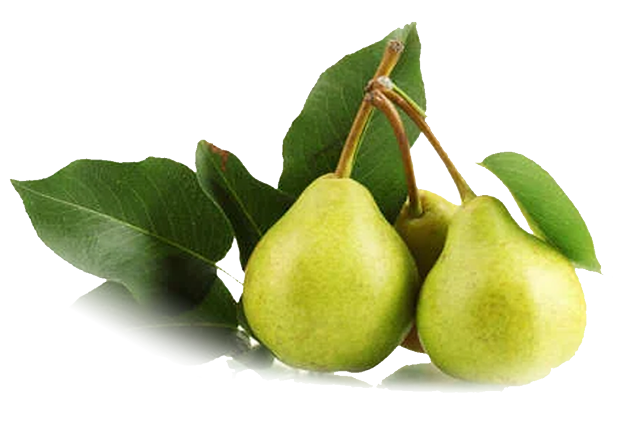Pear Tree
Are pear trees difficult to grow?
Pear Trees (Pyrus spp) are very popular fruit tree varieties today due to their beauty and taste. However, they are quite challenging to grow, especially if you have never grown them before. Below are some tips to make sure your pears turn out just right!
Pear Tree Fertilizing Methods
The first thing to do is to choose
the correct fertilizer. There are two types of fertilization methods when it
comes to pears: chemical fertilizing, and organic fertilizing. Chemical
fertilizing uses synthetic chemicals while organic fertilizing relies on
natural substances. Both options work equally well, though organic fertilizing
tends to give a slightly larger yield than chemical fertilization. So,
whichever option you decide to go with, make sure to use a high-quality
product.
Picking Fruit
If you want to get the best possible
fruits from your pears, selecting the right time of year is critical. If you
wait until late fall, then the fruits will likely be fully ripe and ready to
pick at once. But if you wait until summertime, the fruit will be soft and not
yet fully ripened. Choose a time that suits your preference for picking fruits.
Also, make sure to select only the strongest, juiciest fruits. You don’t want
weak, rotten ones!
Storage
To prevent rotting, store your pears
in a cool, dark place. Ideally, you should keep them somewhere between 50°F and
60°F. If the temperature gets too warm, then the fruits will start to rot.
Pruning
Prune your pears to shape them
properly. Remove any branches that lean toward each other and try to keep them
evenly spaced apart.
Watering
Water your pears regularly. Keep the
roots moist by applying water to the soil around the base of the trees
frequently. Make sure to remove any excess moisture on the ground beneath the
trees.
Mulching
Mulch the area around the trunk of
your pears with shredded bark to help retain moisture. Avoid using wood chips,
straw, hay, or anything else that may harbor insects or disease.
What is the best climate for pear trees?
Temperature
The temperature is probably the
biggest factor determining how successful your pear tree is going to be. If the
temperature drops below freezing at night, then damage to your tree could
occur. In addition to this, if the temperature stays above 60 degrees Fahrenheit
during the day, it may lead to stunted growth. An ideal environment would be
somewhere between 55-65 degrees at night, and 75-85 degrees during the day.
Humidity
Humidity is just as important as
temperature and should be monitored closely. Ideally, humidity levels should
stay around 50% to prevent molding and rot. A dehumidifier may be needed in
some cases for optimal growth.
Precipitation
Precipitation may be the hardest variable to control in regard to climate. As long as it doesn't rain constantly, then you're fine. However, too much precipitation may cause problems, such as flooding or rotting of the fruit. Pears, like apples, prefer slightly acidic soils, so they need good drainage.
How long does it take for a pear tree to bear fruit?
A pear takes about 10 years to bear fruit
A Pear Tree (Pyrus communis) produces
fruit after 10 years from planting. If your tree bears fruit only once in its
lifetime, you may want to consider replanting. In some parts of Europe, Pears
have been known to live up to 300 years. They are native to the Mediterranean
region.
A pear tree's lifespan is around 100 years
The lifespan of a Pear Tree (Pyrus Communis)
is 100 years. It is considered a short-lived fruit tree; however, it can
outlive many trees in its environment. There are several types of Pear Trees,
including Bartlett, Seckel, Anjou, and Bosc.
A pear tree requires 3 years to produce fruit
To obtain fresh fruit, a Pear Tree
(Pyruss Communis) needs at least three years before producing fruit. Afterward,
the tree will not bear fruit again until the third year the following season.
By then, the fruit will begin to ripen. Fruit production is influenced by
weather conditions, such as temperature and precipitation. Too much rain may
cause the tree to become stressed, while insufficient rainfall can lead to
fruit drop.
Pear trees do not need pruning
Pear Trees (Pyrus Communis), unlike
citrus trees, do not require regular pruning to maintain their shape. Pruning
removes excess wood causing a decrease in a tree's vigor.
Pears are high in vitamin C
Pears are high in Vitamin C content.
One medium sized Pear contains 90 mg of Vitamin C.
How many pears can you eat a day?
"The usual answer is three".
This is incorrect; the correct answer
is two. You need only to consume half as much food as you normally would. So if
you normally consume 300 grams (10 ounces) of pear per day, you should consume
150 grams (five ounces).
"If you eat three pounds of apples each week, you could eat about 500 apples a year."
You must remember to factor in the
number of weeks of the year. If we assume that you eat three pounds of apple
per week, then it takes 52 weeks of eating to get to 500 apples, or roughly 12
years.
Is pear healthier than apple?
Yes! Pears have many health benefits
while apples do not. Both pears and apples are great fruits that offer amazing
nutrition and taste. But here are 5 reasons why we recommend enjoying the fruit
of the pear tree.
Reason 1 – Pears Are a Good Source of Vitamins and Minerals
Pears are packed full of vitamins and
minerals. Pears are high in vitamin C and fiber while being low in calories.
Because they are juicy and sweet, people tend to eat them just out of hand.
However, eating an entire pear with no cutlery at all would be a mistake.
Reason 2 – Pears Have a Low Glycemic Index
The glycemic index measures how fast
food affects blood sugar levels after consumption. Foods with a higher glycemic
index cause rapid spikes in blood sugar levels. Fruits and vegetables with a
low glycemic index are much easier to digest and cause less fluctuation in
blood sugar levels. In fact, a pear has a lower glycemic index than an apple,
so it’s perfect to snack on before or after meals.
Reason 3 – Pears Have More Antioxidants Than
Apples
Apples contain more antioxidants than
pears even though they are both good for you. When cooked, pears lose about 10%
of their antioxidant content. However, if raw, pears still contain twice the
number of antioxidants than apples. Cooking also reduces the iron content of
pears by 30%. Iron is necessary for red blood cells, therefore, if you choose
to eat your pears raw, make sure to consume them with plenty of veggie
toppings.
Reason 4 – Peaches Are Better Than Oranges
Peaches are sweeter and juicer than
oranges. One serving of fresh peaches contains almost 4 times the amount of
vitamin C compared to 1 serving of orange juice. Vitamin C helps prevent cancer
and skin aging. Plus, peaches are a powerhouse of fiber and antioxidants-
making them a smart choice for snacking.
Reason 5 – Pears Are Higher in Folate
Folate is a B vitamin that is essential in preventing neural tube defects in babies. Women who are pregnant should get 400 micrograms of folate per day to help reduce the risk of having a baby with birth defects. Pears provide 9 times more folate than oranges!
What are the disadvantages of pear?
- Pear skin, like grape skins, have some chemicals which may cause liver toxicity. In addition, they have a high content of tannins, which means that their pectin content is low. Pears are rich in vitamin C, iron, and fiber. However, they do not provide any protein or calcium. Due to its abundance of vitamin C, pears are often recommended for kids suffering from colds.
- Pear seeds are small and hard. As a result, the fruit does not ripen well and tends to be less uniform in size.
- The taste of ripe pears is sour due to the presence of malic acid in the fruit.
- Because of their soft flesh, pears tend to bruise easily, making them difficult to pack and ship.

















0 Comments:
கருத்துரையிடுக
Thanks for Read the post